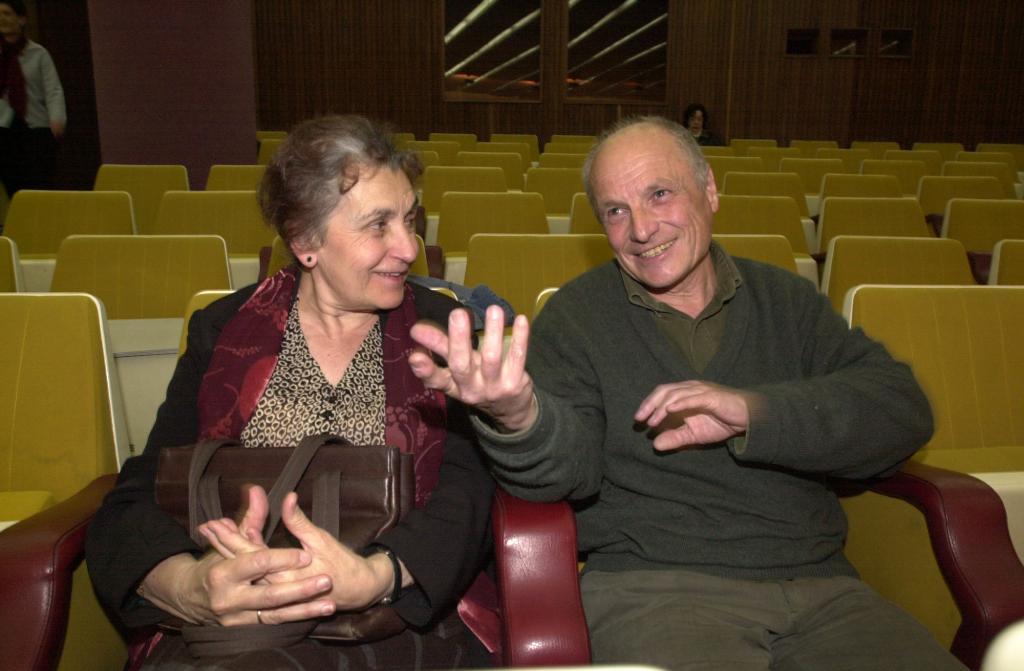The Gran Vía by María Moreno seems like a dream: saturated with light, white, gray and yellowish and deserted as in a painting by De Chirico. The Gran Vía by María Moreno also seems an answer to the Gran Vía by Antonio López, her husband, her trade and generation partner and the artist whose career has also been Moreno's great project. How to measure such a delivery in 2020, when we all strive to give fair value to the work of women artists? María Moreno, painter, has just died in Madrid at 89.
In the absence of anthological exhibitions in the great museums, the name of María Moreno only found public echo in 2016, with a Spanish Television program called Essentials: María Moreno, light and guide of Antonio López , who portrayed the figure of the painter almost to Impressionist brush strokes, as if an accurate drawing were impossible. There appeared Claude Bernard, the Parisian gallery owner who had worked with Freud, with Bacon and with Giacometti , and who opted for Moreno with enthusiasm. Bernard explained in that recording that Moreno had not helped in the show he organized, that he had to go to Antonio López for the painter to accept his offer. Why? "I think Maria is very playful," Bernard said.
The temptation is to see in Antonio López the figure that devours the life and work of María Moreno. Those who have met the couple do not see it so clearly. " Moreno acted as a parapet for Antonio , let's say he managed the figure. I wouldn't say he was his secretary or his assistant but he was a bit like his manager," explains a family friend. Did she sacrifice her career for her husband's? "Partly yes and, in part, she also benefited from Antonio's charisma."
The symbiosis between López and Moreno also reached the personal. Antonio is talkative and, in his own way, theatrical; As soon as he sits at a table to eat with several people, he grabs the spotlight. He has a sly character who pretends to be less intellectually sophisticated than he really is. Maria, on the other hand, has been a silent and sweet woman. Her paintings are also attributed a care for detail and a delicacy in color that distinguish her from those of her husband. Many of the themes were common (the city, especially), but the paintings of the two painters explained each other by contrast.
López and Moreno met at the San Fernando School of Fine Arts in 1954, where Lucio Muñoz and Amalia Avia met in the classrooms. María (Mari, for her intimates) had been born in a liberal Madrid family, but had spent part of her childhood in Valencia. By the time he reached adulthood, the El Paso group began to emerge in European art. In the classrooms, López, Moreno, Avia, the López Hernández brothers and Ginés Liébana were formed as a critical and realistic response to their older brothers and abstract expressionists. Lopez found an early reputation in that fight thanks to his eloquence and his taste for the fight. Moreno accepted a secondary role. She had two daughters and accepted that it was her husband's career that could enter history. An anecdote: in the filming of The Sun of Quince , the relationship of Victor Erice and Antonio López twitched. It was Maria who acted as a bridge.
"Antonio has taken great care of Maria," the family's friends say. Some of his best-known works portray the couple as two Chinese terracotta soldiers. It is another way to enter the museums.
According to the criteria of The Trust Project
Know more- art
- culture
The Paper SphereOlaffur Eliasson: "Patriarchy is the elephant in the room of this country"
The Paper SphereRodin and Giacometti, turbulent appetites for life
PROPOSAL 10 free plans not to give up culture even if money is lacking

